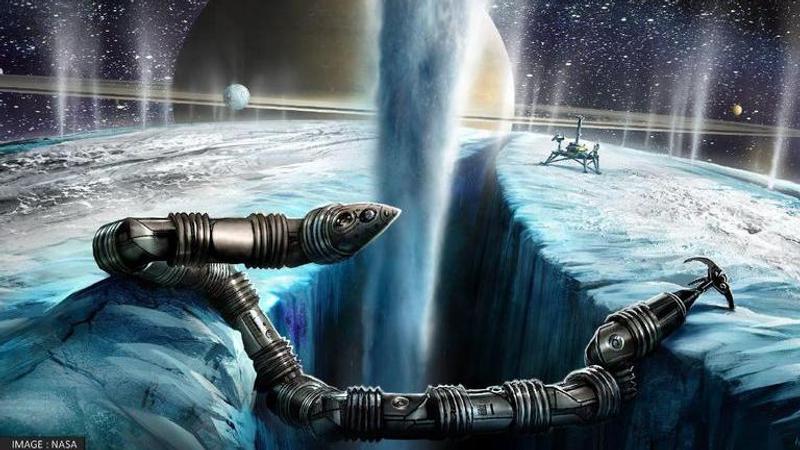Published 17:21 IST, April 19th 2023
NASA develops snake-like robot EELS, to be deployed on Saturn's Moon in search of life
The snake-like robot known as the EELS can move through rough terrain to examine the planet's surface and determine whether life is present.

Advertisement
US space agency NASA, based in Washington D.C., is creating a snake-like robot that might serve as a catalyst to accelerate space exploration by adapting to diverse terrain. With its revolving wheels, the snake-like robot known as the Exobiology Extant Life Surveyor (EELS) can move through rough terrain. Its purpose is to examine the moon's surface and determine whether life is present.
NASA explained the capability of EELS. In a statement, it said, "A mobility system designed to explore internal and enclosed dynamic terrain structures in order to assess habitability and evidence for life." Christian Stenner, a member of the Royal Canadian Geographical Society shared a photo of him with an EELS prototype. He tweeted, "I got to meet EELS prototype at NASA JP Exobiology Extant Life Surveyor."
I got to meet EELS prototype ❤️ 🤖 🐍 at NASA JPL
— Christian Stenner (@LoPerformancAth) April 18, 2023
Exobiology Extant Life Surveyor #OceanWorlds #space #exploration pic.twitter.com/6ExvDD1wig
What is the EELS?
NASA states that EELS is a "mobile instrument system" built to "explore internal terrain structures, assess habitability and ultimately search for evidence of life." It later added, "It is designed to be adaptable to traverse ocean-world-inspired terrain, fluidized media, enclosed labyrinthian environments and liquids."
It further talked about the architecture of the EELS system. The statement read, "The EELS architecture is a snake-like, self-propelled robot and made of multiple, identical, segments containing both the actuation and propulsion mechanisms as well as the power and communication electronics to drive them."
"EELS uses first-of-a-kind rotating propulsion units that act as tracks, gripping mechanisms and propeller units underwater, enabling the robot to access a plume vent exit and follow it to its ocean source," it said.
The sixth-largest moon of Saturn, Enceladus, has been found to have liquid water and the chemical components necessary for organic molecules (carbon, hydrogen, nitrogen, oxygen, and sulphur). NASA intends to send the robot there.
16:52 IST, April 19th 2023



